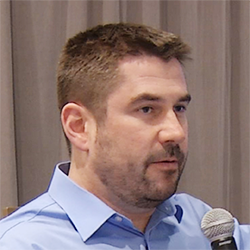Home » Dysautonomias » Stress and the Autonomic Nervous System
Stress and the Autonomic Nervous System
In this video Dr. Goldstein discusses how stress impacts the autonomic nervous system including differential sympathetic and sympathoadrenal responses.
Everybody knows what stress is. Nobody knows how to define it. By thinking in terms of integrative physiology, there’s a pretty straight forward definition of stress that comes about. What does stress have to do with the autonomic nervous system? Well, we’ve already talked about the “sotah” case, so we know there is some relationship between distress and adrenaline. One nice advantage of the integrative physiological approach is, you can define stress. It’s not easy to define stress without being completely circular – stress, that’s what causes stress. How do you know there was stress? Because, look at what happened. Well what if there wasn’t stress? Well then that wouldn’t happen. Well if it didn’t happen, why didn’t it happen? Because there wasn’t any stress, and so forth – circular. But with an integrative physiological approach there’s a way to define stress, it’s not hard. Stress is a condition. It’s a condition where there’s a discrepancy between the information that’s coming to the homeostat and the set point, and when the discrepancy drives an affect, that’s stress.
This is really key for understanding the blood pressure changes that occur during stress. I think because of higher centers such as in the hypothalamus being/having altered activity, the barostat basically gets reset. There’s a resetting, a resetting. You are going to a different curve. So, the blood pressure is higher, the heart rate is higher. Ordinarily because of the baroreflex, if the blood pressure goes up, the heart rate goes down. But not during distress, so this is what I think happens for instance in people who faint.
Now remember, Cannon taught that the sympathetic sympathoadrenal system functions as an emergency system to maintain homeostasis and it’s not correct. And there are examples where sympathetic noradrenergic system activity is going one way and sympathetic adrenergic system activity is going another way or at least there is a difference in activation of the two systems. So, for instance, we just talked about distress. Distress mainly involves adrenal medullary activation and whether sympathetic noradrenergic activation occurs kind of depends on which target organ you’re looking at.
When people faint, there’s a phenomenon that I described a long time ago now called sympathoadrenal imbalance. It just means that the increase in adrenaline is greater than the increase in norepinephrine. Suppose you go out in the cold – you have goose bumps and so forth, you turn pale – that’s from sympathetic noradrenergic system activation. What happens to adrenaline when you go out in a cold? Nothing really. This is an example of selective sympathetic noradrenergic system activation. So, you can have differential sympathetic noradrenergic and adrenergic responses. What that means is it’s not correct to just say that in stress you get your catecholamines pumping.
Oh! This is a direct illustration from Cannon’s work that explains the “sotah” story. Remember the blood of the cat that was exposed to a barking dog? He called it here “application of excited blood” and these are spontaneous contractions, gastrointestinal strip contractions, and you can see that the application of the excited blood…B here, right here, and F there…eliminated those contractions. So, that was the first demonstration of distress-induced adrenaline release by this bioassay.
Nowadays you can measure stress by measuring your skin temperature, right? You can have these stress test cards for instance. It’s really measuring the skin temperature. Adrenaline is very potent at constricting the blood vessels in the skin. I think that’s why people turn pale when they are going to faint. When the blood vessels are constricted then there is not much warm blood that’s making it to the skin surface so the temperature of the skin begins to approach that of the room temperature which is usually much lower and that’s the basis for the stress test card.

Wolfgang Singer, MD
Associate Professor of Neurology
Mayo Clinic Rochester, MN































